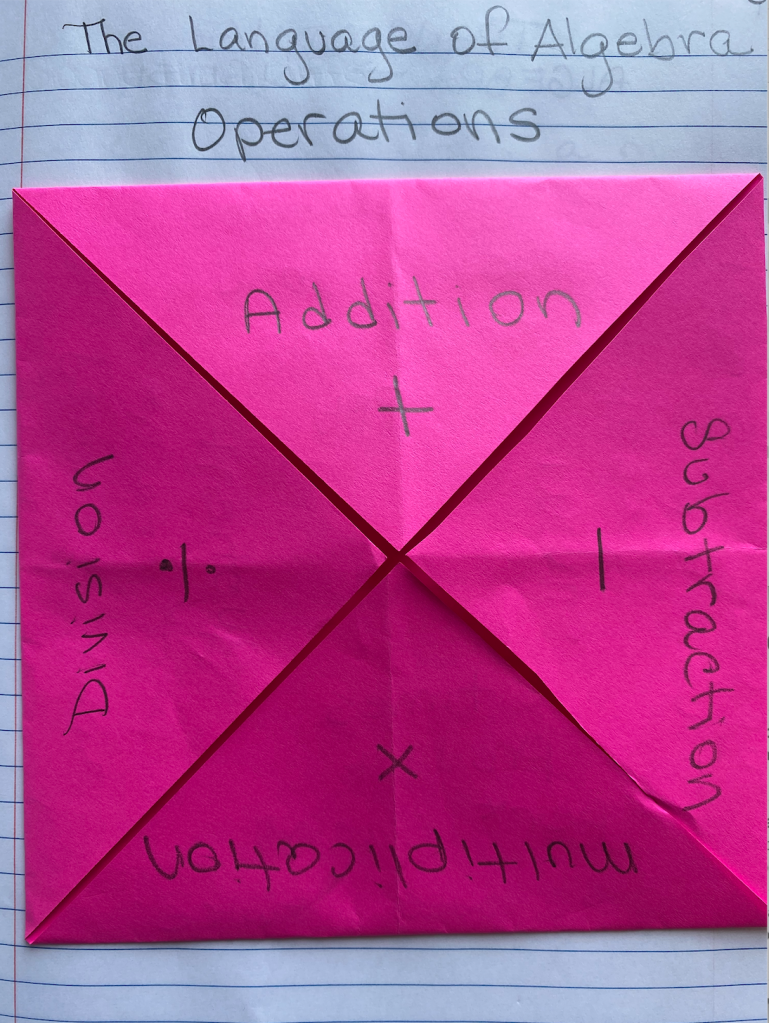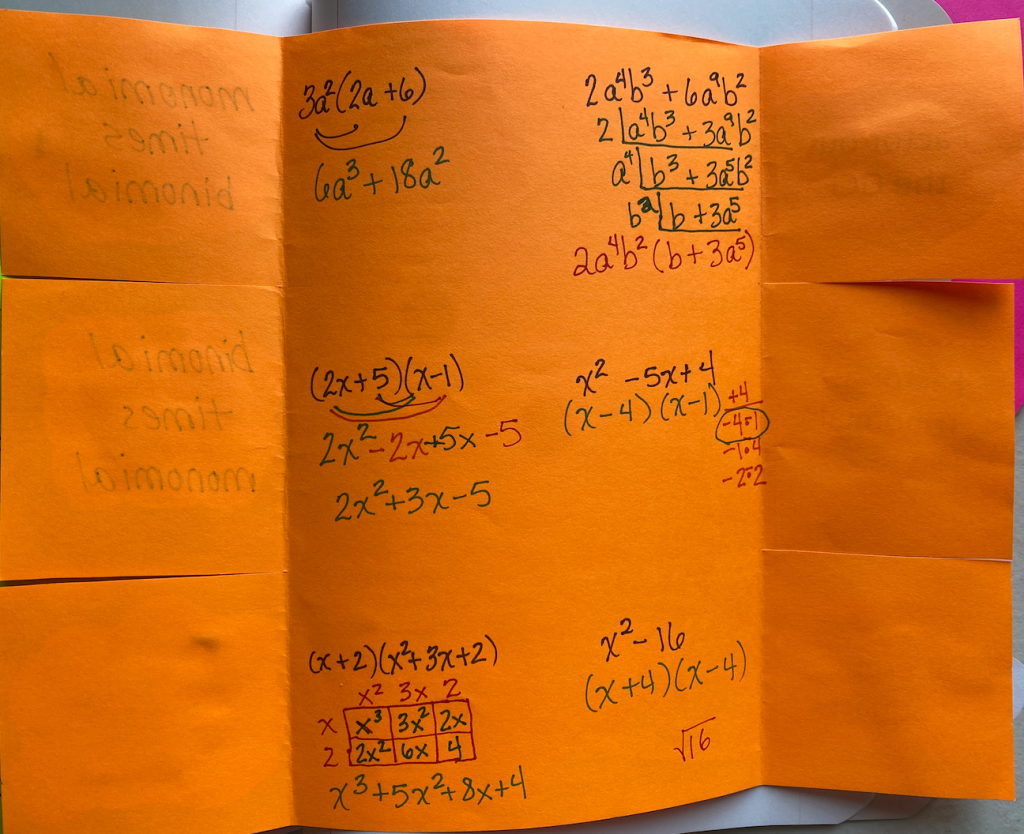When, exactly, do students learn how to study?
Fifth grade? Middle School? Certainly they know how to by the time they enter high school, right?
Where in the curriculum do we teach them how to study? What to study? How to take notes and what to do with them?
After 18 years teaching Middle and High School Math, I’ve found that most of my students need a lot of help taking notes, and figuring out how to use them effectively to review for assessment, or even just to help them with classwork. Where to start? How do I teach content while also teaching students how to take notes, when to take notes, and how to use those notes?
I’ve used many different resources in this vein over the years: binders, Cornell notes, guided notes, etc. but never found them to be completely effective. Some students did well with them, but others didn’t. I couldn’t get consistent note taking to take-off. And oftentimes students didn’t have the appropriate notes with them when they needed them.
Then came the interactive notebook. Game changer. I’ve been using interactive notebooks for the last 7 years and will never teach without them again.
What, exactly, is an interactive notebook? Contrary to the implications of its name, it’s not digital. An interactive notebook is usually a composition notebook that students “interact” with by gluing in visuals, highlighting, drawing, graphing and reflecting on the pages with the notes. Some characteristics of the interactive notebook include consistent page numbering, tables of contents, examples, vocabulary and foldables.

We begin the year setting up our notebooks. We create art to glue on the cover, we glue in a table of contents for every unit and we number every single page. (This part is important, if a bit annoying. We want all students to have the same notes on the same page. More on that later.) When we begin our first lesson, we all turn to that page and copy down the learning objective, vocabulary and examples on that page, and update the table of contents. This process is repeated daily with the mini lesson, do now and summary / reflection.
Often, (2 – 3 times a week), I will hand out something for students to glue in to the notebook on a specific page. This could be a graphic organizer on the steps to solving a problem, or a small coordinate plane that they will need to graph on, or a number line. Use your imagination to think of the helpful graphics students might need to refer to. Students also make foldables a few times every unit and add those to their interactive notebooks. Again, on a specific page.

So we are all collecting information in one place. We all have notes, on the same pages, in our respective notebooks. Now what? How do students learn how to use those notes?
At the beginning of the year, students will put their notebooks away after the do now, when the activity or classwork comes out. But I tell them, “Take your notebook back out, you’ll need it to help you with this work.” Furthermore, when students raise their hands and say “I don’t get it”, I respond with “Well, let’s see. Where’s your notebook? Is there something in there that could help us?” And I will help the student go through their notebook until we find the examples that will help them, modeling how to use the table of contents to find the proper page. Sometimes a student will say “Ms, what’s the formula for slope again?” and I’ll ask their group-mates, “what page is the formula on?” They reply “page 42!” and the student can find the appropriate formula.
In this way, students start to see the value in the notebook. (Plus, the fun, interactive add ins make them think it’s kinda cool.) It empowers students to help themselves and starts to build real independence. A little later in the year it becomes something they are very proud of. “Miss! Look at all the work I’ve done in my notebook! I can’t believe I did all that!!!”

After training my students to use their notebooks to help them in class, we graduate to using it on quizzes. I make my quizzes open notes, but students have to use their own notebooks, not a neighbors. This process is so wonderful! Kids feel empowered to know they have their notebooks. And it’s so neat to see them all leafing through their pages looking for the examples that will help them on their quiz. Plus it builds confidence!
At this point, we are getting proficient in taking notes and referring to those notes to help us when we are stuck. But how do we learn to study from them?
When we are preparing for a Unit Test, kids receive review packets, and of course they can use the notebooks at home to complete them. I also assign quizlets and other online activities to complete at home, with the aid of the interactive notebook. Now that students have the hang of using the notebook in class, they are comfortable using it at home to help themselves.
Perhaps students’ favorite review activity is the notebook scavenger hunt. This looks like a guided notes sheet with a bunch of blanks on it. It contains questions such as “what is the quadratic formula and what page is it on in your notebook?” or “what is the definition of coefficient and what page is it on in your notebook?” These questions force them to crack the notebook, look for the answer and write it down. In this activity, they are studying. This is the beginning of learning how to study! When students complete the scavenger hunts, they report that they perform better on assessments.
Students receive a notebook check grade every unit. It’s a simple project grade and honestly an “easy A” as long as they are keeping up with what we are doing in class. I check notebooks during class while kids are taking a test. It’s a simple scan to check that the table of contents is updated, look for a few important formulas, foldables, and vocabulary. It’s fairly simple to tell if students are keeping their notebooks up to date. I jot down some feedback on a sticky note and return it to the student with a grade.
There’s also a copy of the table of contents on chart paper near the front of the room. Students take advantage of this to ensure they have everything they are supposed to in their books. Before notebook checks, I post a picture of the final table of contents to google classroom so they can check to make sure they are updated.
Students report that these note taking skills help them when they move on to advanced classes. They come back to tell me that they still create their own interactive notebooks even if their new teacher doesn’t use them. They love to show them to me and explain what they’re learning. And isn’t that the whole point?
For interactive notebook resources, visit my TPT store!
https://www.teacherspayteachers.com/Store/Math-Lab-Classroom
Never miss a post! Subscribe free!!


Leave a comment